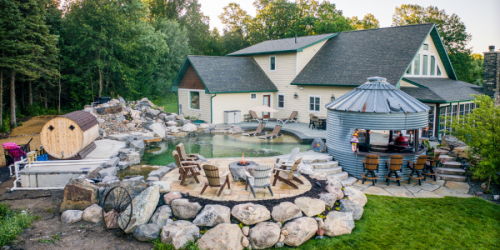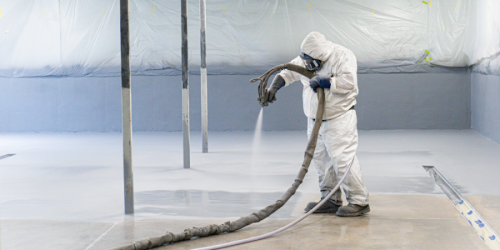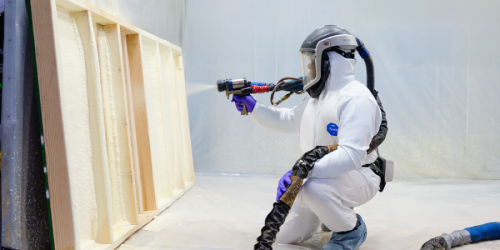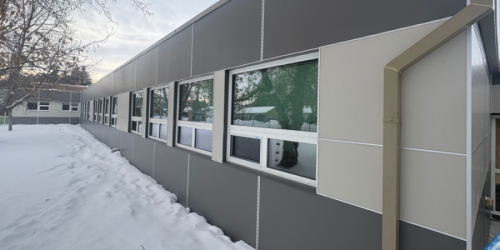Q&A Forums
minimum pressures Post New Topic | Post Reply
| Author | Comments |
|---|---|
|
Mark Mouton
Posted: Jun 12, 2012 10:44 PM
|
minimum pressures
What would you consider to be the lowest pressure for spraying 1/2 lb. oc and/or 2 lb. cc? If you would,tell me what will happen to the foam if you get below these pressures. I like to know my perimeters. I install Icynene if that foam makes a difference. My understanding is that iso(A) and polyols(B) do not mix and are therefore forced together under pressure which causes the reaction. Anything else you could explain about the chemistry (for someone who's IQ is a little above 60) would be appreciated.
|
|
steven argus
Posted: Jun 13, 2012 11:50 AM
|
Sorry to step on your toes, Mason. I'm sure Mason can answer all your question, but questions about how to spray a foam should really be directed to your manufacturer. I thought Icynene had an extensive training program?... |
|
Mark Mouton
Posted: Jun 13, 2012 12:05 PM
|
Guiness;Icynene does have a good training program. I just thought I might tap into Mason,and/or possibly George,s knowledge and go beyond what I've learned thusfar. I seem to learn more when I hear it from different people's perspective. They also seem to have a knack for explaining in layman's terms. |
|
mason
Posted: Jun 13, 2012 01:48 PM
|
You need a minimum amount of pressure to spray foam properly. Not enough pressure will result in a poor mix of chemicals and the foam will suffer. It may set up but not have the dimensional stability you need, also could have lingering odors from unreacted catalysts. The best way to minimize overspray and control the application is to use a smaller spray tip. This reduces the flow while keeping your pressure up. |
|
mason
Posted: Jun 13, 2012 01:52 PM
|
To be more specific. 3 things are needed to mix and spray foam correctly. Heat, pressure and impingement mixing. Heat reduces the viscosity of the liquid material which allows it to mix better, pressure forces the liquid into a mixing chamber or nozzle with enough force to create a swirling effect. Within the mixing chamber, the liquid is introduced slightly offset so that the material collides and swirls under pressure. This mixes the foam. If you increase the heat, less pressure is needed, if you increase pressure less heat is needed if you increase the mixing effect less heat and pressure is needed. Material suppliers recommend not only heat and pressure but also equipment and spray gun configuration that works best with their foam. So, the material manufacturer is the best source for determining how to adjust any of the 3 elements needed to spray good foam. |
|
Mark Mouton
Posted: Jun 13, 2012 02:08 PM
|
Thanks Mason,I understand better what is happening in the mixing chamber. |
|
Mark Mouton
Posted: Jun 15, 2012 07:28 AM
|
In regards to viscosity of open cell sprayfoam, using 75 degrees as a base and 135 degress as high, would you mind explaining what happens to the A side and B side at varying temps? I've been told the B side is about 4 times thicker than the A side.(I understand different foams are gonna be different. Maybe pick 1 or 2 you like) Are the side holes in the mixing chamber the same size? I guess to be a perfect 1 to 1 the viscosities would need to be equal(I don't live in a perfect world, and my questions split hairs, but it helps me define perimeters),but maybe at 1200-1400 psi that helps take the the margin of error out. Thanks |
|
mason
Posted: Jun 17, 2012 08:12 PM
|
While most B sides have a higher viscosity at 75 degrees F than the A side, they tend to even out when heated. But some systems require a little more heat on the B side. It is only important to heat the materials sufficient to get a good mix. Too much heat can cause the foam to be too frothy and hard to control. Most of the spray guns mixing chambers, nozzles, etc are the same size on the A and B side. In the old days, you could change the impingers on the AR spray gun which would reduce the flow rate on one side of the gun. This would be used to balance pressures when one side had a much greater viscosity than the other and the pressures would be way off. This made it a little trickier to spray than now. Better heaters eliminated the need for this type of technology. |





























